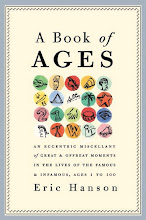On this day in 1429 seventeen year-old Joan of Arc set out at the head of a French army to rescue Orleans from the English armies who surrounded it. Her forces broke the English siege in ten days. In July, she stood beside Charles VII when he was crowned King of France, and a month later she made her triumphant entry into Paris. But she was subsequently captured by the English, tried as a witch and burned at the stake when the new French monarch refused to ransom her.
In the April 25, 1953 issue of the journal Nature, Francis Crick (age 36) and James Watson (25) declared: “We wish to suggest a structure for the salt of deoxoribose nucleic acid.” They had discovered the double helix structure of the DNA molecule that defines life.
But had they? Or had someone else seen it already?
The controversy here surrounds the important and largely forgotten work of Rosalind Franklin, who was working simultaneously on a parallel study of the DNA molecule. She too had seen what Crick and Watson were writing about, but they were the first to publish their findings. Ironically, it was one of Franklin's brilliant photographs of the DNA molecule which made the lightbulb go off in James Watson's head. Crick and Watson won the Nobel for their work in 1962, four years after Rosalind Franklin died of ovarian cancer at age 37.
Subscribe to:
Post Comments (Atom)





No comments:
Post a Comment